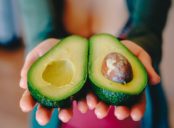Protein Diet: A Comprehensive Guide to Optimal Nutrition

Protein Diet – Unleashing the Power of Macromolecules for Optimal Health and Fitness
Introduction:
In today’s ever-evolving world of nutrition and wellness, the protein diet has emerged as a leading contender for achieving optimal health and fitness. Protein, being an essential macronutrient, plays a crucial role in numerous bodily functions, from muscle growth and repair to hormone production and immune system support. In this article, we will delve into the depths of protein diet, exploring its different types, popular variations, quantitative measurements, and its historical pros and cons.
I. An All-encompassing Presentation of Protein Diet

To truly understand the concept of a protein diet, it is essential to grasp its fundamental principles and various types. A protein diet is a nutritional approach that emphasizes the adequate consumption of high-quality protein sources, such as lean meats, dairy products, legumes, and nuts, while minimizing the intake of carbohydrates and fats. This particular dietary pattern aims to optimize weight management, enhance muscle development, improve satiety, and enhance overall health.
1. Types of Protein Diets:
a) High Protein/Low Carb Diets: This approach restricts carbohydrate intake and emphasizes protein-rich foods. Examples include the Atkins diet, the Paleo diet, and the ketogenic diet.
b) High Protein/Vegetarian Diets: Ideal for individuals who prefer a plant-based diet, this variation focuses on plant protein sources like tofu, beans, lentils, and quinoa.
c) High Protein/Low Fat Diets: These diets often involve lean protein sources, such as skinless chicken breast, turkey, and fish, while minimizing fat intake.
d) Meal Replacement Protein Diets: This type includes consuming protein shakes or bars instead of regular meals, as a convenient and efficient way to maintain protein intake.
2. Popular Protein Diet Approaches:
a) The Dukan Diet: This diet gained popularity through its four-phase structure, which includes a predominately protein-based ”attack” phase.
b) The South Beach Diet: A flexible approach that encourages high-quality protein consumption alongside whole grains, healthy fats, and fruits and vegetables.
c) The Zone Diet: Advocating a 40:30:30 ratio of carbohydrates, proteins, and fats, respectively, this diet aims to balance insulin levels and promote weight loss.
II. Quantitative Measures of Protein Diet
When embarking on a protein diet, it is crucial to understand the recommended protein intake and the various methods of measurement. The Food and Nutrition Board recommends a daily protein intake of 0.8 grams per kilogram of body weight for most adults. However, this amount may increase for athletes, individuals engaging in intense physical activity, and those looking to build muscle mass.
1. Protein-Rich Foods and Portion Sizes:
To achieve the desired protein intake, individuals can incorporate a variety of protein-rich foods into their diet. Some examples include chicken breast (30 grams per 100 grams), Greek yogurt (10 grams per 100 grams), lentils (9 grams per 100 grams), and almonds (21 grams per 100 grams). Monitoring portion sizes and using measuring tools can aid in accurately tracking protein intake.
2. Protein Supplements:
In certain cases, individuals may struggle to meet their protein requirements solely through whole foods. In such instances, protein supplements, including whey protein powders and protein bars, can be a convenient option to boost protein intake. However, it is essential to consult a healthcare professional or nutritionist before incorporating any supplements and to ensure they align with one’s dietary goals and requirements.
III. How Protein Diets Differ from Each Other
While all protein diets share the common objective of prioritizing protein intake, the specific macronutrient ratios and food choices differentiate them from one another.
1. Macronutrient Ratios:
Some protein diets advocate for higher fat intake, such as the ketogenic diet, which emphasizes high fat, moderate protein, and very low carbohydrate consumption. Conversely, other diets, like the Zone diet, aim for a balance between carbohydrates, proteins, and fats.
2. Food Choices:
Different protein diets have varying guidelines on permissible food choices. For instance, vegetarian protein diets exclude animal products, promoting plant-based protein sources instead. In contrast, other protein diets allow for a wider variety of animal-based proteins.
IV. Protein Diets through the Ages: A Historical Perspective
Throughout history, protein diets have garnered both praise and criticism, with scientific research constantly evolving our understanding of their benefits and drawbacks.
1. Historical Advantages:
Historically, protein diets have been lauded for their ability to facilitate weight loss, promote muscle development, and increase satiety. Proteins’ thermic effect, the energy expenditure required for digestion and absorption, can also contribute to weight management.
2. Historical Disadvantages:
At times, protein diets have faced criticism for potential health risks and nutritional imbalances. Extremes in protein intake may strain the kidneys, and inadequate consumption of other essential nutrients, such as fiber and certain vitamins, could lead to deficiencies.
Conclusion:
As the concept of the protein diet gains momentum, its potential benefits for weight management, muscle development, and overall health cannot be overlooked. By tailoring protein intake to suit individual needs and preferences, individuals can harness the power of macromolecules to maintain a balanced and sustainable nutritional lifestyle. Always consult with healthcare professionals or registered dietitians before embarking on any dietary changes or restrictions.
References
– Include a list of references here, formatted according to the appropriate citation style.





















